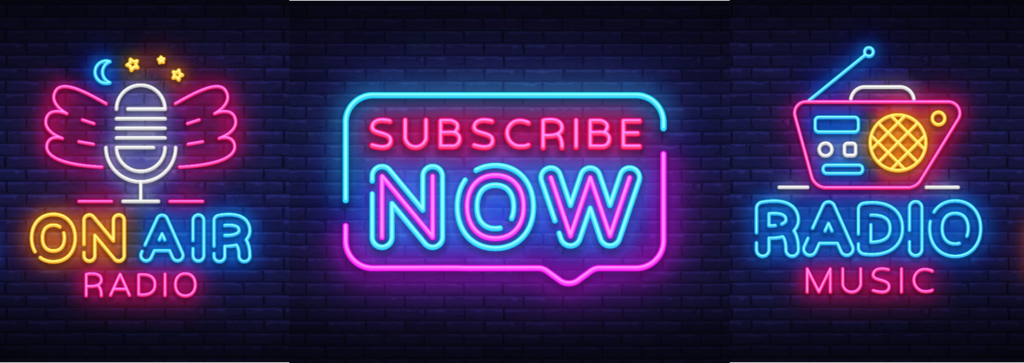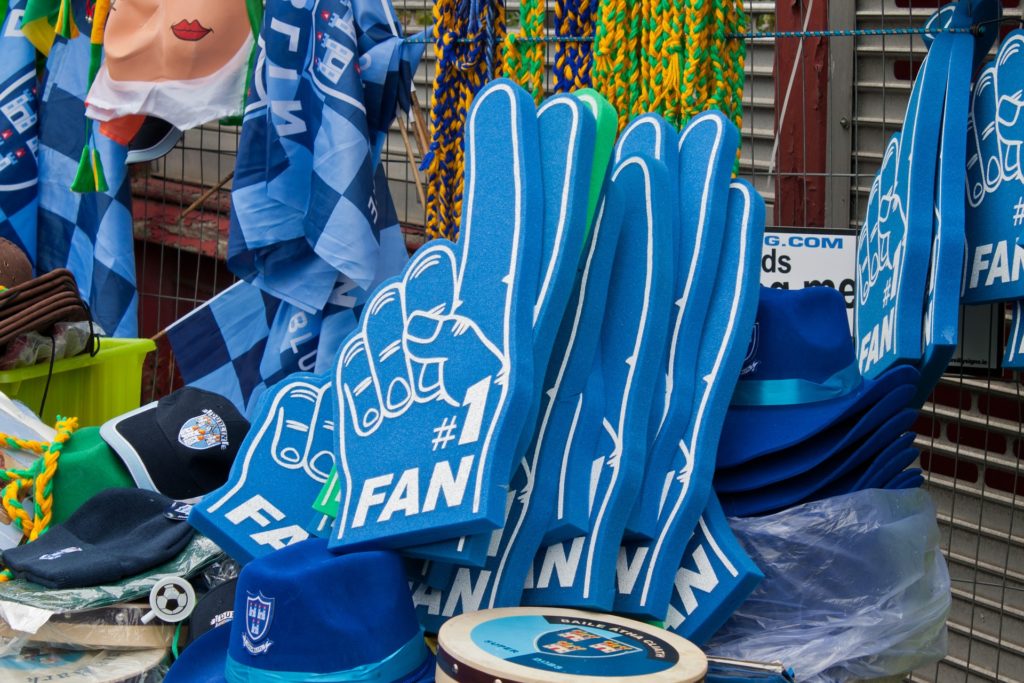
Yesterday’s post – “Radio And The Subscriber Economy” – generated a number of comments yesterday from a host of broadcasters. Most wanted to talk about the inherent difference in media business models: the subscriber-driven platforms like Netflix and SiriusXM versus the more traditional ad-supported legacy outlets like broadcast radio.
Isn’t it like comparing apples and oranges? After all, an FM radio station’s success is hinged on winning a ratings popularity contest, followed by the ability to price and market its inventory accordingly. The subscription model is a whole other animal.
But at its core, it’s about satisfying an audience and winning their loyalty – whether they spend their time, their money, or both on a media brand. And in order to achieve success with either system, the bar to success keeps getting higher and higher.
This came through to me loud and clear when reading a recent TechCrunch story by Eric Peckham about a sports subscription site called The Athletic. It’s just two years old and has already attracted 100,000 paying subscribers – the majority of whom are Millennials or younger. In the story, CEO Alex Mather and a key investor, Eric Stromberg (Bedrock Capital) laid out the game plan they followed to grow this amazing media startup.
I checked in with three of my favorite sports radio gurus – Rick Scott, Jason Barrett, and Jason Wolfe – and all see something interesting happening with The Athletic. While they all point to the need for an even better tech interface, improved navigation, better multi-media content, and articles you can’t get anywhere else, they all see an interesting media product for sports fans.
Whether you’re into sports fanatic or you’ll be watching old movies on Super Bowl Sunday, The Athletic provides lessons in the challenges involved in creating a media product that’s “subscriber worthy.” When you’re going up against everyone from juggernaut ESPN to contrarian Deadspin to the everyman’s Barstool Sports – and you’re hoping consumer will part wtih their money to access your product – well, that’s a heavy lift.
The Athletic’s 10-step plan is a crash course in building and growing a successful new media operation that has managed to retain 90% of its paying readership. Public and Christian radio programmers, managers, and development directors can learn a lot from the route The Athletic is taking.
But whether you’re building or maintaining a radio station or any other media outlet, there are key lessons here for brand managers, content creators, and marketers. The subscriber model is a great litmus test for any media brand.

For broadcast radio stations, it’s a great template for ensuring the listening audience is satisfied and remains loyal in a sea of media competitors. Here’s how The Athletic has pulled it off:
1.They’re a bit contrarian – Most news and sports websites have quick-hitting, bite-sized stories and content. Writers are responsible for multiple stories each day. The Athletic has committed what Stromberg calls a “narrative violation,” focusing on in-depth stories that run counter to so-called snackable content. In order to stand out in today’s crowded audio environment, competitive radio stations must strive to be different. As Mather notes, “We have to obsess over where we can be different.”
2. They focus on fans – Rather than target the broadest possible audience, The Athletic is geared to the sports fanatic. And that’s the passion factor that supports their subscription model. In radio circles, many programmers contend the need to also go “big tent,” attracting a large cume audience But the “80:20 Rule” suggests that smaller followings generate the most dynamic results – in this case, subscription fees.

3. They think local – You’d think a global media brand would focus on the biggest games and the superstars. But The Athletic has methodically moved market by market, now operating in 47 local markets and growing. When I received their introductory email, there were great stories about Ted Lindsay and Ken Daniels – two names you don’t know unless you’re a Detroit sports fan. That curated, hometown stuff is what hooks fans in. In sports, as in radio, local matters. It drives loyalty and kindles intense interest.
4. They’re in it for the long haul – Rather than going for what VC’s call “hockey stick growth,” a key to The Athletic’s subscription model is retention. And they achieve their goals by deeply engaging with subscribers and thinking long term. In radio, a contest or tactical marketing effort will drive results for a book or a quarter, but often generates transient success. In subscriber models – as in brand building – retention is what’s called a KPI – or Key Performance Indicator, trumping radio’s cume, quarter-hour, or even conversion rate.
5. They reinvest in the product – Stromberg calls it a “positive flywheel.” The concept is that as their revenue base grows, The Athletic has systematically hired better talent to create premium content. Oftentimes, radio companies will simply throw profits to the bottom line, rather than sinking resources back into the product, resources, talent, and infrastructure – the keys to sustainable growth.
6. They believe in personalities – The Athletic team has made the calculus its subscribers develop loyalties to their writers, religiously following their stories and their coverage. As they expand into local markets, they seek out established writers who already have a following. We know this formula works in radio where listeners will follow great talent from one station to the next. Anyone can be a beat writer, but the great columnists, commentators, pundits, and humorists are the ones that build, retain, and move audiences. They are worth their weight in gold.
7. They develop strong technology – In some of the reviews I read, fans love The Athletic’s mobile app and website. As their platform has grown and their content has expanded, the brand has invested in ensuring a strong UX – or User Experience. The same tenets are in place when building a great radio brand, where the signal, the stream, the app, and other station platforms have to operate seamlessly in order to keep and hold an audience.

8. They’re building one platform at a time – The Athletic didn’t rush into audio and video, instead relying on basic text. They’ve raised more capital in order to provide robust multi-media content moving forward. Barrett, Scott, and Wolfe all agree multimedia content matters a great deal to true, dyed-in-the-wool sports fans – something The Atheltic buys into but realizes they need to do it right. In similar fashion, it is essential that as radio brands and companies move into different media, they commit the human and financial resources necessary to provide quality products.
9, They rely on subscriber ratings – Every story in The Athletic has a simple ratings scale: “meh,” “solid,” and “awesome,” along with a comment box so readers can provide real-time feedback stories they read. Using these metrics, editors can analyze what moves the needle rather than simply using pageviews. Clearly, it’s a form of “research” than provides real-time reactions to what fans see, read, and consume. Too often in radio, it’s all about the ratings rather than understanding fans and their reactions to what they’re hearing on the air.
10. They believe in their community – The Athletic uses its subscriber base to connect fans with one another, as well as to staffers. Mather has a background in social media for athlets, so they seen this type of engagement pay off before. For decades, radio stations and personalities lacked meaningful feedback loops, aside from the “request line.” Today, social media and other engagement tools make it possible for station personalities to connect with listeners, as well as fan communities to form organically. Too often, however, social media in radio is an afterthought, rather than a meaningful connection and feedback tool.

The Athletic’s rapid rise to respectability and profitability in an over-crowded competitive media space should stimulate radio operators to think beyond the traditional metrics of ratings and revenue results.
Yesterday’s post and today’s focus on The Athletic reinforce the notion that a subscriber mindset is a key to brand building and long-term success. When you’re managing a radio station as if it needed listener support in order to sustain itself, you begin to focus on the attributes that truly matter to customers.
Whether its Netflix, Spotify, SiriusXM, or WNYC, operating a media platform with a laser focus on consumers – serving and satisfying them – is a key to generating passion, loyalty, and revenue.
The media world of 2018 is proving that new and different models for sustainability are not only possible, they’re even desirable. Broadcasters have to start thinking about brand expansion, growing revenue in secondary and tertiary places, and connecting with fans beyond remotes.
As our three sports consultants noted, the road to success for The Athletic is a long, hard one. But any media brand can learn lessons from its already impressive effort in a highly competitive media environment.
So, would your listeners pay to listen to and experience your radio station?
Thanks to the irrepressible Harvey Kojan for inspiring the topic and this blog post.
- What To Do If Your Radio Station Goes Through A Midlife Crisis - April 25, 2025
- A 2020 Lesson?It Could All Be Gone In A Flash - April 24, 2025
- How AI Can Give Radio Personalities More…PERSONALITY - April 23, 2025




In commercial radio we seldom talk about the non-coms – we dismiss them as somehow not being ‘real’ radio. But if you take the NPR affiliates, local focused music outlets, and religious stations, they probably account for an additional 15-20% of the market revenue. WNYC in New York collects $70 million per year alone. Or how about KEXP in Seattle that just completed a $14 Million dollar broadcast facility downtown (including their own coffee shop and video studio)…and was given a $10.5 Million donation anonymously.
Focused on tight communities of common interest and I think the evidence is that audiences will pay.
Absolutely, Jackson, and now that public radio “shows up” in PPM markets, just talk to the commercial radio operators in markets like Seattle, Portland, SF, D.C., Boston, and so many others. By super-serving those “tight communities” with stellar service and programming, they’ve become mass appeal players in 2018. Thanks for the comment.
One of the hardest things to do is to put yourself in someone else shoes. We project our passions on to others and think everyone knows what we know and is interested in what we are interested in.
As a Yankee fan, I can tell you every Yankee third basemen since Clete Boyer but ask me to name three soccer players…….Pele………hmmmm…..and you know….that English guy married to one of the Spice Girls?
I like beer and know the differences between ales and lagers, porters and stouts but wine is strictly red or white to me.
Because many people went into the radio industry because of their passion for music, we think everyone else is passionate about music. They are not. I’ll bet over eighty percent of people in this country couldn’t name three Beatles songs unaided. You programmed Fred and know that better than anyone.
By my estimate, 93% of people like, but don’t love music. Guess what percentage Nielsen says listen to radio in the course of the week?
People tune to radio for the familiar and comfortable. It is their companion through the day. They are listening with half their ear which is actually an advantage because they are absorbing the info without being so distracted by it that they can’t function for their commute or their job. They could be three commercials in before they realize we even went to break. But with good copy and repetition, they will know your slogan, website and jingle.
For many, there isn’t a great deal of passion behind the decision. If we can stoke interest for an artist or a song, they used to go out and buy the album, the CD or the digital download. Now, they can buy a subscription to Spotify with the money they previously spent on CD’s. Those people have always been around. Now they have other options on how to purchase their music.
Our system has worked well because we have suffered the least erosion of any other traditional media. Unfortunately we have let ourselves be defined by others and haven’t challenged their misconceptions effectively. It has been shown that a big indicator if a media buyer in a major metro buys radio is how they commute. If they commute via car, they bought radio. Mass transit? Who listens to radio anymore? I listen to Spotify with my earbuds on the Train.
As the Edison Research has shown, Spotify, Sirius and the rest are small compared to radio but media buyers overestimate their size because THEY may use those services.
We are not a subscription industry as that is not a model most in mainstream radio can win with. Taylor Swift gives us the song, we play it and generate adverting revenue and she sells albums (the most since the early 2000’s because she didn’t release it to the streaming services), the tickets and the merch.
Public radio, the interesting experiment with WDST and maybe a few Morning shows can sell their content, but I’m happy to reach a lot of people who want the hits for free and have it curated by a friendly voice. That formula still works. We just need to make sure advertisers understand it.
Mike, extremely well stated. There is no doubt that a significant part of radio’s recent problems in the marketplace is due to advertiser pereceptions. That turned out to be a big theme at Forecast last month, articuated by Colin Kinsella. It came down to all those 27 year-old media buyers who don’t “get” radio – or even the human condition outside of midtown Manhattan.
I agree that’s a “thing,” and wasn’t surprised by the Edison data confirming the perceptual gap that exists.
That said, many radio operators still run their stations like it’s 1985 and they’re the only game in town. They don’t consider the fan experience, they think everyone is still listening on clock radios, and they don’t put listeners first.
When you’re operating in a “subscriber economy,” all these variables need to be taken into account, and that’s been the impetus behind the last two posts. We are an ad-supported model because “we’ve always done in that way.” It has served the industry well – until it hasn’t. I’m not suggesting a quantum shift to a subscriber model, but some smart, strategic experimentation wouldn’t hurt radio, especially with those fifth stations in most clusters that are underperforming anyway.
Thanks for chiming in. And I’m on board any effort to educate advertsers about the value of radio. As my grandmother used to say, “It couldn’t hurt.”
A quick thought – one of the ways Radio is adapting to the “subscriber economy” is in the NTR arena where we are producing more of our own events and generating revenue through ticket sales. They aren’t subscribing but it is revenue that is coming directly from our listeners wallet.
Radio operating like it is the only game in town is a whole other, much longer and more complicated discussion, but I would also suggest that with all the added competition we have still faired much better than Newpapers, Cable and the Networks. Twenty years ago Seinfeld was the number one show and reached over 30 milliion people a week. Now, the top rated shows don’t average over 10 million. If WLTW lost two thirds of their cume then I would agree radio has lost its fastball.